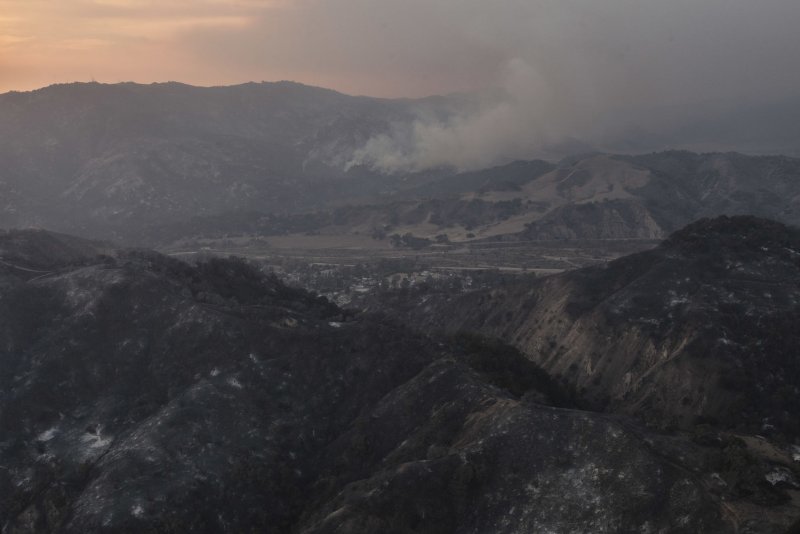begin quote from:
begin quote from:
Mudslide danger looms in Southern California as fire threat diminishes
Mudslide danger looms in Southern California as fire threat diminishes

Officials in Southern California are assessing burned slopes and
culverts to try and prevent flash floods and mudslides that can happen
after massive fires. Photo by SrA Crystal Housman/U.S. Air National
Guard/UPI
| License Photo
Jan. 2 (UPI) -- As firefighters gain
control of Southern California wildfires, state and local officials are
assessing burned slopes and culverts to try and prevent flash floods and
mudslides that sometimes follow such fires.
In Ventura and Santa Barbara counties, public works crews are clearing debris basins and storm drains ahead of a rain event, something the area has seen little of this season.
Cold weather helped firefighters gain an upper hand on the Thomas Fire, the largest fire in California's recorded history, but what the fires leave behind is the next threat.
Forecasters say one storm with a lot of rain in a short amount of time is all it takes to start a mudslide.
Because of the burned hills, county officials expect any rain amount will produce twice the amount of water into flood channels. Work crews are cutting down dead trees and hauling away debris that could block drains and cause flooding.
After massive wildfires, rainwater typically does not soak into the ground but instead rolls down hardened soil -- taking with it ash, soot, dirt and debris, which creates fast moving mud flows.
A spokesman for districts in Los Angeles and Ventura counties told the Los Angeles Daily News that crews will likely begin "repairing burned slopes and slope drains, hydroseeding which helps control erosion, installing mulch and straw blankets and cleaning and repairing culverts."
Other repairs will need to be done to guardrails, signs, electrical systems, fencing, and crews will be installing temporary concrete barriers to minimize falling dirt and rocks onto highways.
In Ventura and Santa Barbara counties, public works crews are clearing debris basins and storm drains ahead of a rain event, something the area has seen little of this season.
Forecasters say one storm with a lot of rain in a short amount of time is all it takes to start a mudslide.
Because of the burned hills, county officials expect any rain amount will produce twice the amount of water into flood channels. Work crews are cutting down dead trees and hauling away debris that could block drains and cause flooding.
After massive wildfires, rainwater typically does not soak into the ground but instead rolls down hardened soil -- taking with it ash, soot, dirt and debris, which creates fast moving mud flows.
A spokesman for districts in Los Angeles and Ventura counties told the Los Angeles Daily News that crews will likely begin "repairing burned slopes and slope drains, hydroseeding which helps control erosion, installing mulch and straw blankets and cleaning and repairing culverts."
Other repairs will need to be done to guardrails, signs, electrical systems, fencing, and crews will be installing temporary concrete barriers to minimize falling dirt and rocks onto highways.

No comments:
Post a Comment